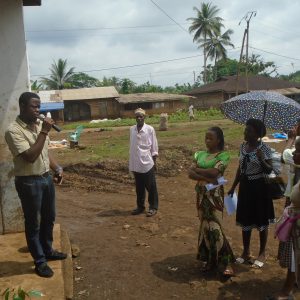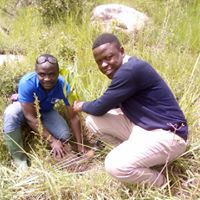Climate Change Intervention
Climate change has been described as one of the greatest challenge of our time, because it effects are leading to extreme events like drought, floods, landslide, and food insecurity. The root cause for climate change is believed to be global warming linked to the anthropogenic emission of gases such as CO2, CH4 and other greenhouse gases. All these have continually increased world temperature and the consequences of these alterations are starting to become more visible as climate condition and ecosystem begins to change. Climate changes represent a new threat and challenge to many household and social groups with a limited capacity to adapt. Household adaptive capacities are weakened by factors such as high level of poverty, diseases, poor governance, and conflicts amongst others.
Climate change interventions (reduce the sources of greenhouse gases or enhance the sinks to remove carbon dioxide from the atmosphere) and adaptive capacity (the ability of a system to adjust to climate change, to moderate potential damages, to take advantage of opportunities, or to cope with the consequences) are major challenges that need to be addressed in the current debates. Current mitigating majors are based on the following majors:
• Promotion of transfer of technologies for the implementation of adapting actions at local level, including natural resource conservation systems.
• Addressing of the concern of all vulnerable groups, whose adaptive capacity is low, particularly women, the elderly, physically challenged and the children who are particularly affected by the impacts of climate change.
• Infrastructural investment through the use of climate change proofed technologies.
• Support of the development and implementation of regional medium and long term adaptation strategies and activities.
• The protection of ecosystems including trans-boundary ecosystems, which are particularly vulnerable such as the coastal, marine, wetlands and fresh water ecosystems.
• Development of climate change related Disaster Risk Reduction and management as an adaptation tool, which should be emphasized in the negotiations.
The impact of climate change is going to affect the poorest communities the most, so the focus is shifting to formalising community-based adaptation to climate change. Even with the best of intentions and lots of resources made available by the international community toward climate change, it will only trickle down to the poorest and most vulnerable.
Forest carbon sequestration is one of the key approaches to reducing atmospheric carbon concentration. This can be done by estimating that forestry projects such as protecting, planting and replanting forests will constitute as much as 25 percent of the total global abatement potential. Therefore, forestry can help mitigate climate change through afforestation, reforestation, avoided deforestation, silviculture change, and biofuel and carbon storages in wood products. This defines our line of interests in forest and climate change.



